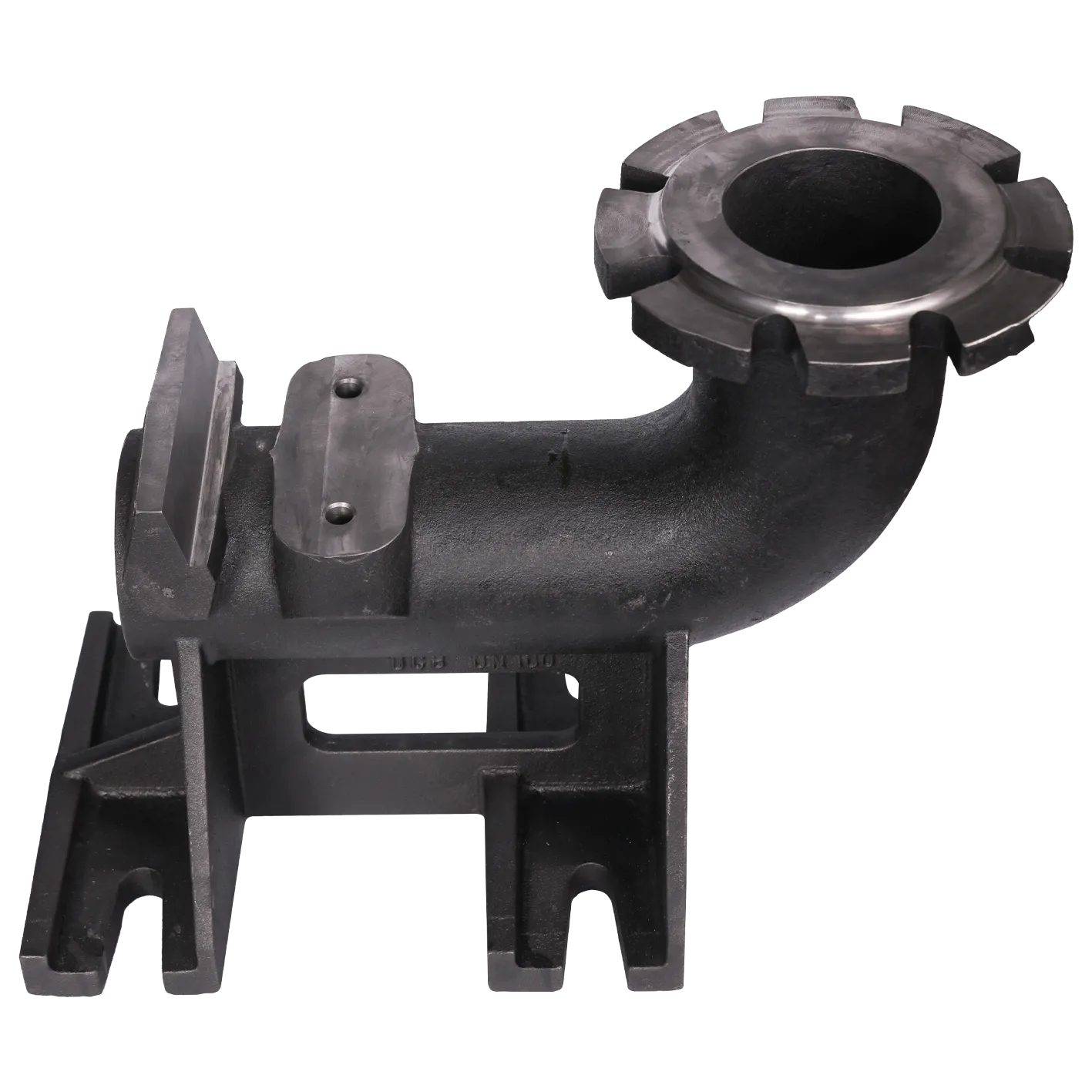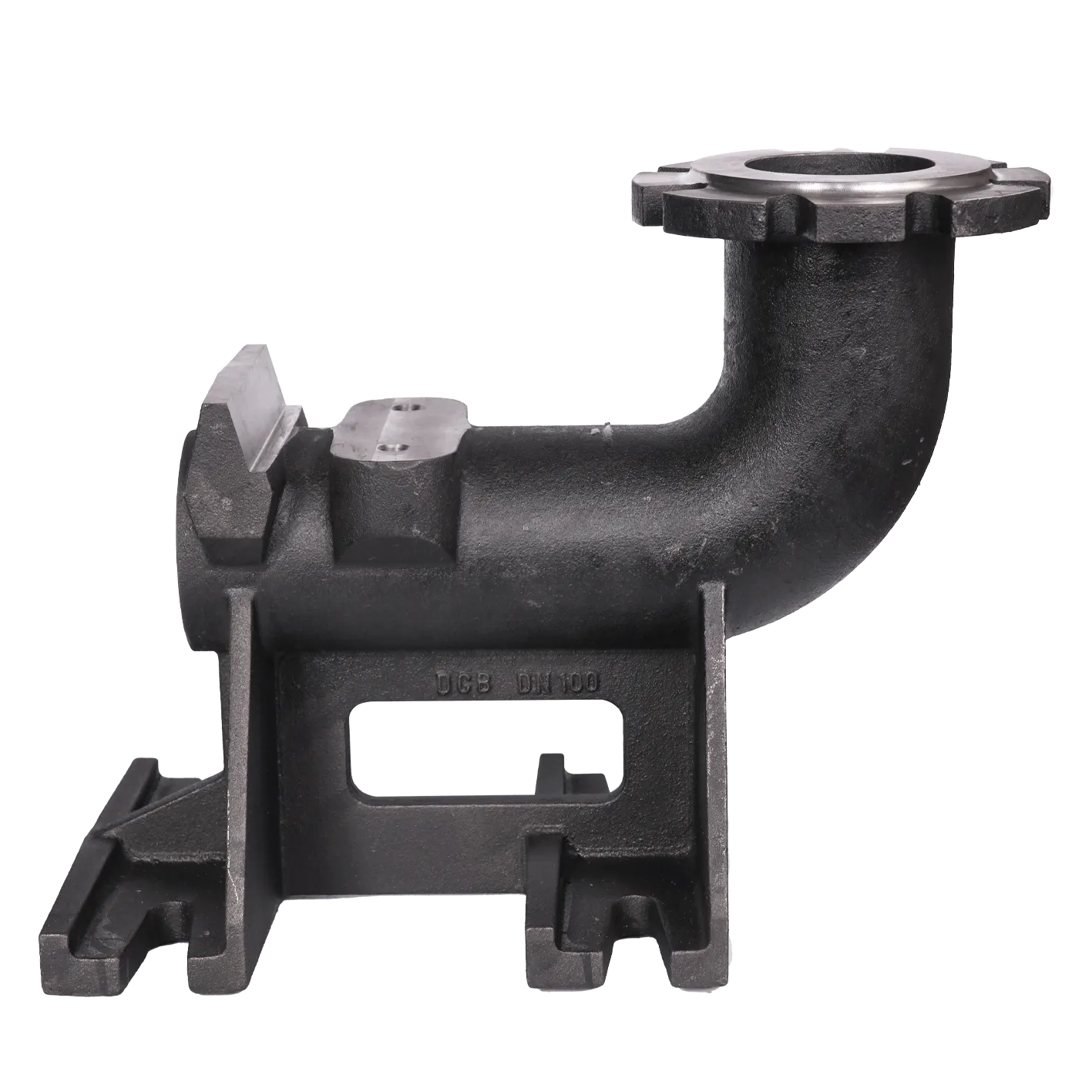Mobile:+86-311-808-126-83
Email:info@ydcastings.com
English
Impeller: High-Efficiency, Corrosion-Resistant, Balanced?
Why the right elbow can make your impeller look like a hero
In pump rooms, people love to talk about the impeller. Fair enough. But the water pump connection elbow—the part guiding flow into that spinning star—quietly decides whether you get efficiency or headaches. I’ve seen projects where a smart elbow layout cut noise overnight; others, sadly, where poor casting or a mismatched radius turned a well-designed impeller into a cavitation machine.
The part in question: water pump connection elbow, cast in GG25/EN‑GJL‑250 (also noted as ASTM‑250S). Resin-sand molded, 30–150 kg range. Origin is old-school industrial China—No.563 Xinhua Road, Shijiazhuang City, Hebei Province, P.R. China. 050051. The factory vibe there is pragmatic; they’ll tweak gating or wall thickness mid-run if CFD or field feedback suggests it. I like that.

Industry snapshot
- Energy efficiency mandates push for smoother inlet geometry so the impeller sees uniform velocity profiles.
- Foundries move to resin sand with better collapsibility; less veining, cleaner passages.
- More recycled charge mixes, but with tighter spectrometer control (to be honest, it took the industry a while).
Product specs (typical, real-world may vary)
| Item | Spec |
|---|---|
| Material | GG25 / EN‑GJL‑250 (≈250 MPa UTS), ASTM‑250S |
| Process | Resin sand casting, manual/automatic molding |
| Weight range | ≈30–150 kg |
| Surface roughness | Ra ≈ 12.5–25 μm as-cast |
| Dimensional tolerance | ISO 8062‑3 CT8–CT10 |
| Hardness | HBW 190–230 (ISO 6506) |
| Pressure test | Hydrostatic 1.5× working pressure, 30 min, no visible leak |
| Finish | Primer or epoxy to ISO 12944 category (on request) |
Process flow and testing
Charge prep → melt control (spectrometer check) → resin-sand molding → pouring → shakeout → riser removal → shot-blast → machining (flanges, faces) → dimensional inspection (ISO 8062‑3) → MT/PT as needed (ISO 9934/3452) → hydro-test → coating. Typical service life: 5–10 years in treated water; abrasive slurries cut that down—be honest with your duty.

Where it fits (and shines)
- Municipal water and HVAC loops seeking quiet, smooth inlet flow to the impeller.
- Agriculture and mining transfer where rugged GG25 handles shock reasonably well.
- Retrofits: replacing elbows with poor radii that were starving a perfectly good impeller.
Vendor comparison (indicative)
| Vendor | Certs | Lead time | NDT | Customization |
|---|---|---|---|---|
| YD Castings (Hebei, China) | ISO 9001; material to EN‑GJL‑250 | ≈4–6 weeks | MT/PT per ISO 9934/3452 | Patterns, wall tweaks, coatings |
| Supplier A (EU) | ISO 9001/14001 | ≈6–8 weeks | MT optional | Standard patterns |
| Supplier B (Domestic) | Shop QA only | ≈2–4 weeks | Visual only | Limited |
Customization and field notes
Options include elbow radius optimization (to calm inlet swirl), flange drilling per DIN/ANSI, and abrasion liners if your impeller lives in sandy water. One utilities client told me they saw ≈12% noise reduction and a small bump in pump curve stability after swapping in a smoother elbow—surprisingly quick win for maintenance.
Mini case study
A northern city booster station had recurring vibration near BEP. The culprit wasn’t the impeller: it was a tight 90° elbow two diameters upstream. Replaced with a better-radiused GG25 elbow, matched centerline, and pressure-tested. Result: cavitation onset shifted, amps dropped ≈3%, operators happy.
Standards and references
- ISO 9906: Rotodynamic pumps — Hydraulic performance acceptance tests.
- ISO 5199 / API 610: Technical specifications for centrifugal pumps.
- EN 1561: Founding — Grey cast irons (EN‑GJL‑250, formerly GG25).
- ISO 8062‑3 (casting tolerances), ISO 9934/3452 (NDT MT/PT), ISO 6506 (Brinell hardness).
-
Materials Used in Manufacturing Cap End Pipe FittingsNewsNov.24,2025
-
Material Properties of CF8M CastingNewsNov.24,2025
-
How to Inspect Pump Cap Ends for DamageNewsNov.21,2025
-
Backward Curved Impeller – Efficient Airflow Solutions for Industry | YD CastingsNewsNov.21,2025
-
Automobile Water Pump - Efficient, Quiet, Durable & ElectricNewsNov.21,2025
-
Impeller for Pumps – High-Efficiency, Durable, OEM-ReadyNewsNov.21,2025











